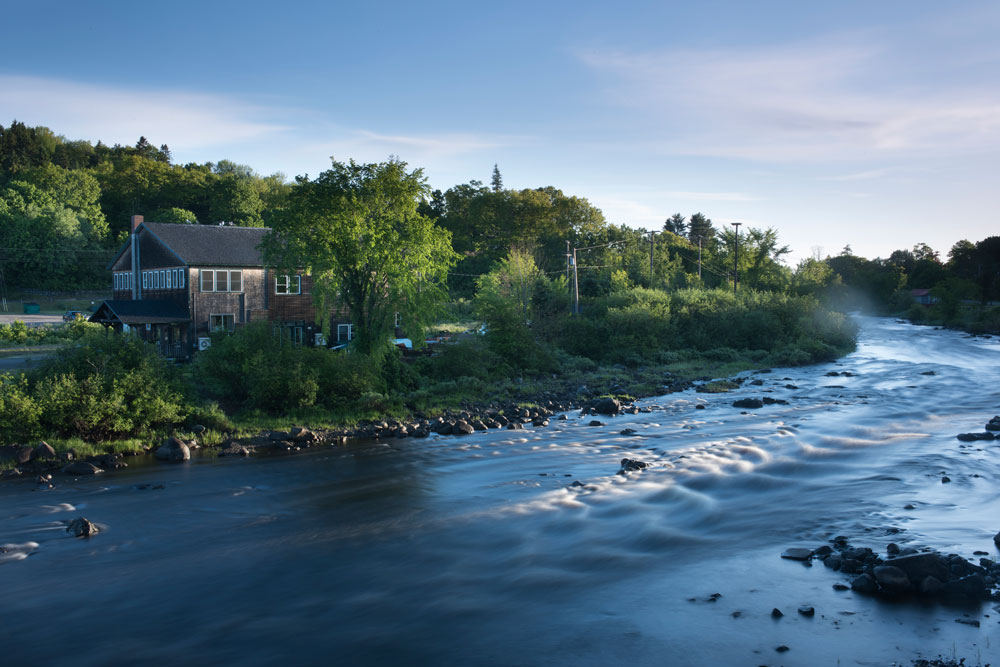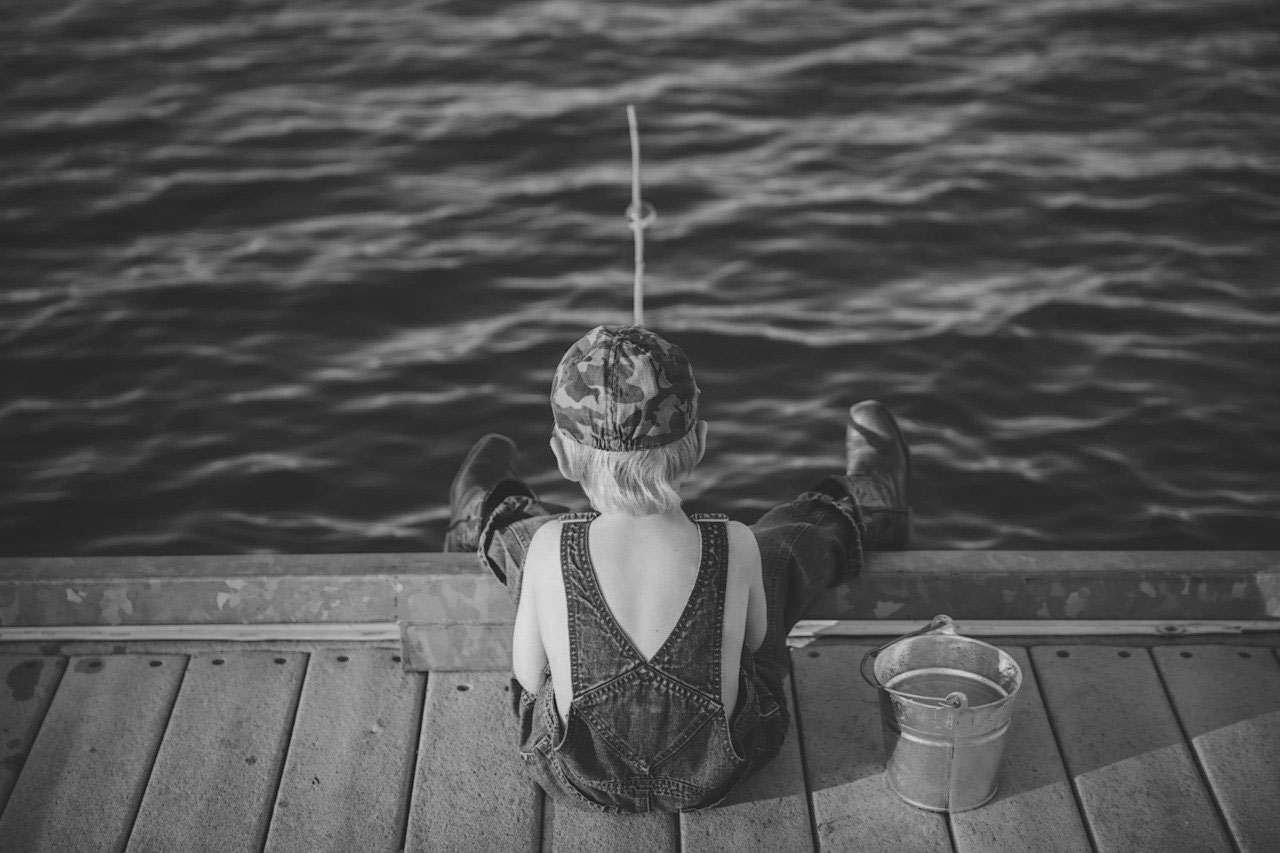When spelled with one “r,” par refers to the number of strokes required by a first-rate golfer on a given hole. I played golf a few times, but the number of strokes I took on the easiest, most direct holes far, far exceeded par. I suspect my dismal success led me to pursue other sports and activities, like fishing, hunting, bird dogs, and shooting. If the shoe fits, wear it, so I did.
Part of what came from my golf miscue is a wonderful fascination with the word spelled with two “r”s. Parr with that extra consonant refers to a young salmon feeding in freshwater. Theirs is an odyssey of epic proportions and is one that has intrigued and inspired anglers, biologists, and conservationists for many years. “Epic” is a fitting description of their lifestyle.
For what fish that typically spends two to three years in freshwater as eggs, alevin, and later as parr morphs into a smolt capable of trading sweet water for the brine, and then swims thousands of miles away from home to the west coast of Greenland? And then when it’s time to breed a year or three later, they repeat that few-thousand-mile swim to return home to their natal river. Unlike Pacific salmon, Atlantics do not die after they spawn, so their habits repeat. “Herculean” might be a better description for their efforts.
Atlantic salmon are one of America’s native fish. They are not like brown trout imported from Germany. They are not like the colorful, cackling ring-necked pheasants that were shipped over from China. Atlantic salmon are one of us. A long time ago they were as common as white-tailed deer, mallards, and largemouth bass. It’s shocking to know that they are now in enough peril to be placed on the Endangered Species List.
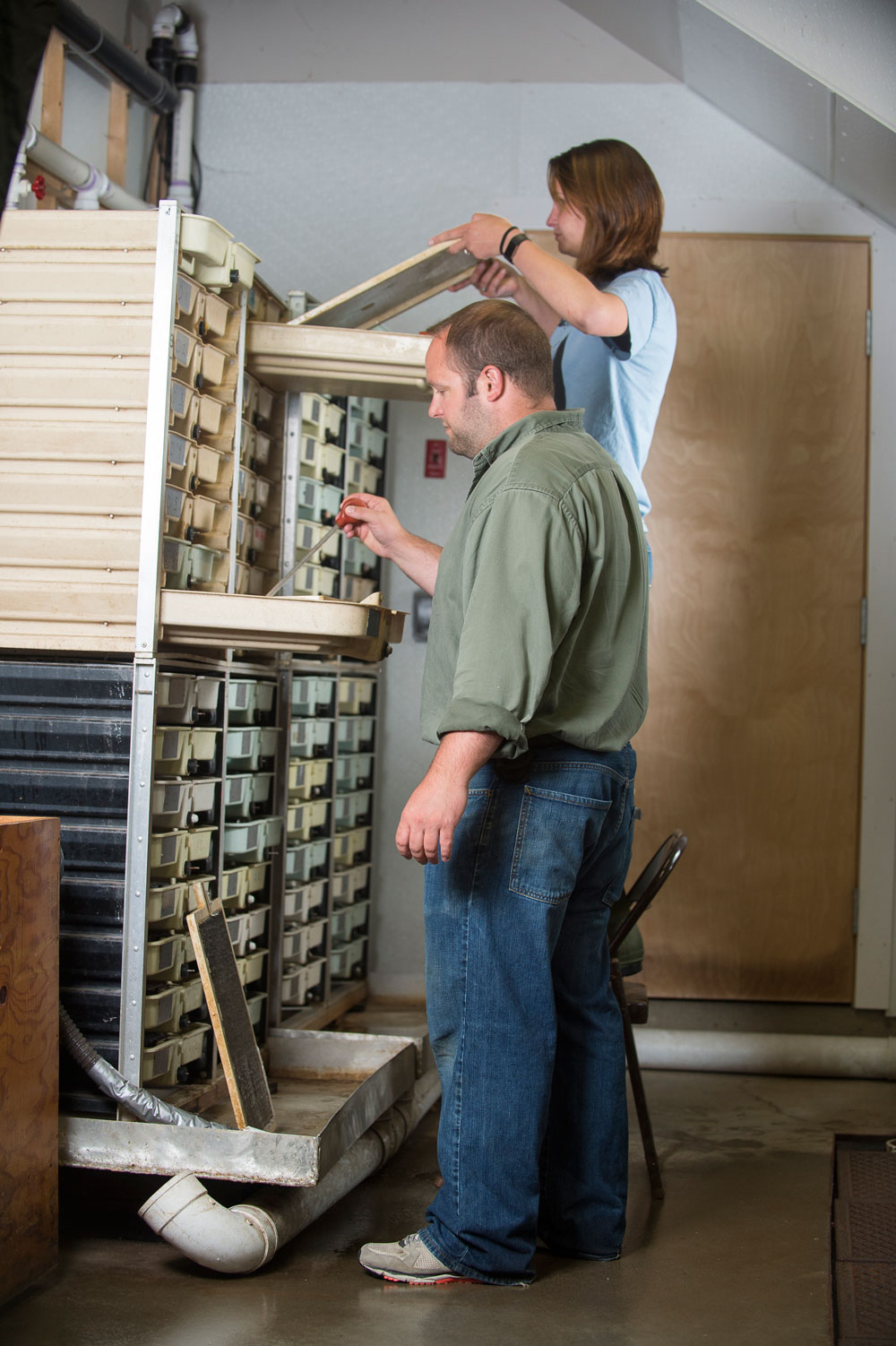
Trays hold eggs that are fertilized with milt for three weeks before they are transferred into the substrate boxes.
At one point in time, Atlantic salmon were so American that they were the common meal of Fourth of July celebrations. And they were traditionally served with peas.
The reasons were twofold. The salmon’s annual migration to their spawning grounds began in the late spring. With more than 300,000 fish swimming upstream in New England rivers, they were very easy to net. But peas? Well, it’s simple. Peas were the vegetable ripe enough to harvest in late June and early July.
Salmon for Independence Day no more, though, for a combination of overharvesting, dam construction, and the silting and polluting of rivers reduced domestic Atlantic salmon numbers to an all-time low. In conjunction with their diminished population, we evidently resorted to hamburgers and hotdogs for our July 4 picnics.
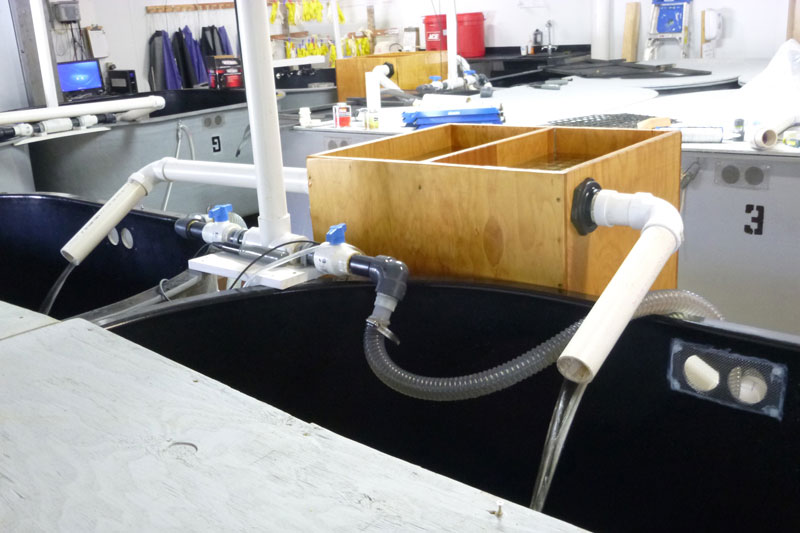
Gray designed substrate boxes to include water running from the salmon’s natal river over cobble, mimicking a natural salmon redd.
No longer is the first Atlantic salmon caught in the Penobscot River in Maine sent to the President of the United States, either. That tradition ceased 25 years ago when the fish was classified as endangered. The last President to receive a Maine-caught Atlantic salmon was George H.W. Bush in 1992. Combine it with the fact that most salmon restoration programs were shuttered due to a lack of success, and our native fish seems doomed.
Some would be content to allow the wild American Atlantic salmon to become extinct like the heath hen, but not the Downeast Salmon Federation. In 2012 they launched the Peter Gray Parr Project (wildatlanticsalmon.org) that is based on the proven, successful methods that their namesake Peter Gray used to restore Atlantic salmon on the River Tyne in England. Gray spent 27 years managing the famous Kielder Hatchery there, and in his tenure he developed a unique and successful way to raise salmon as salmon.
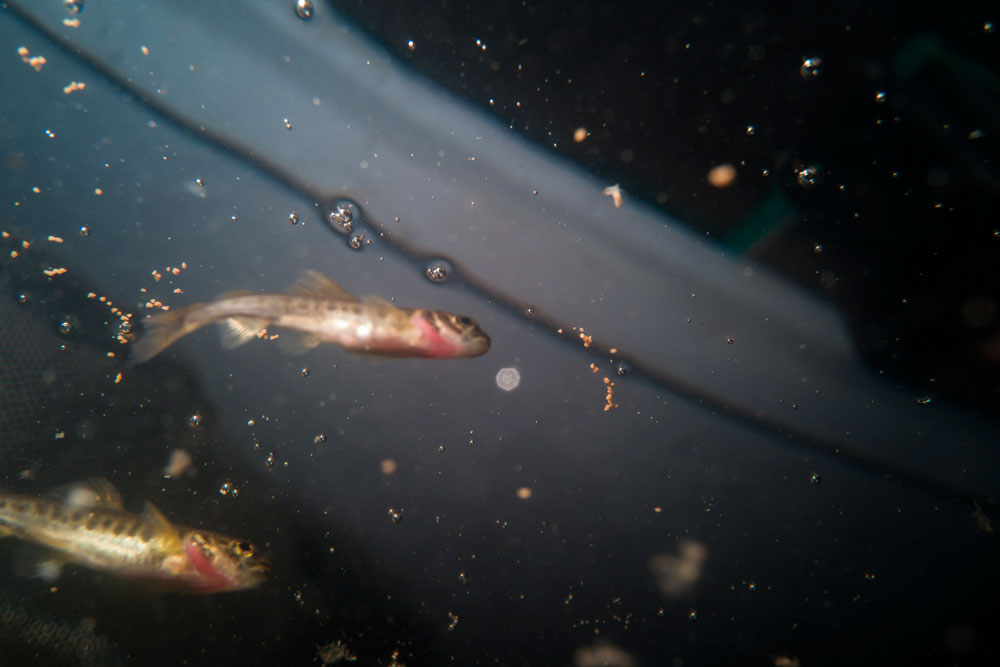
Parr swim in tanks with increasing velocity where they learn to feed and gain strength needed in the wild.
Gray located his hatchery adjacent to the river where salmon spawn. He diverted river water from the Tyne to flow into the hatchery so the fish are reared in water identical to that in which they will live. He created the substrate box that closely replicates a wild salmon redd for egg maturation. Tanks are painted black to darken the parr and condition them to low lighting, so when they are in the wild they are naturally wary.
As the fish developed, he increased water flows to turn them into “little athletes” capable of life in the wild. And he stocked them in the fall when the water temperatures were cold. The parr’s metabolic rates lowered so they did not look to feed, thereby avoiding capture by a cormorant or a heron looking for a meal.
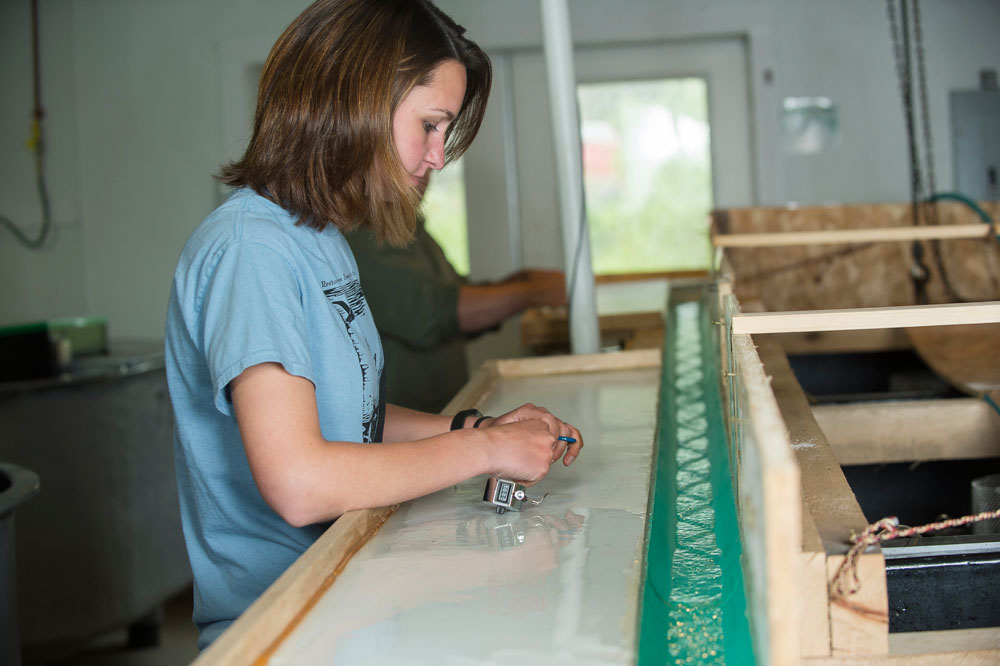
Fins are clipped to designate parr from the hatchery.
Gray’s efforts ran counter-current to domestic programs, most all of which are now shuttered. In the past conventional salmon stocking programs raised salmon like trout. They used inland hatchers with a limited number of eggs. No conditioning was done, the fish lived in water different from their natural environment, and they were stocked in the spring. Some fish died shortly after stocking, while others became meals for predatory fish and birds.
Peter Gray’s success is hailed as one of the most impressive wild Atlantic salmon restoration programs in the 170-year history of Atlantic salmon conservation. His results were staggering—annual salmon returns increased on the River Tyne from 724 to nearly 10,000 adults. A recreational fishery for these wonderful gamefish has now been open for years.
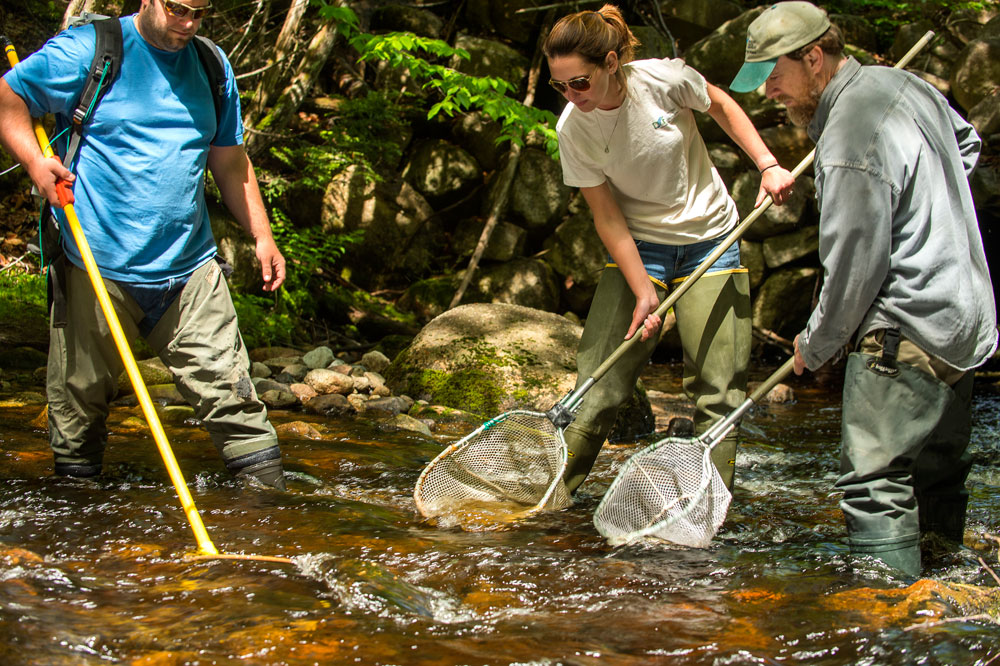
Electroshocking helps biologists determine parr density in the river.
My golf game is extinct, but we have a choice with conserving wild Atlantic salmon. The Peter Gray Parr Project is the last, best hope to keep this species from extinction in their native Downeast Maine rivers. Salmon restoration is a numbers game, and the Peter Gray Parr Project is raising money to stock 400,000 parr each year for the next six years. It costs about $1 to raise and stock a parr, and their goal is to raise $2.2 million towards this effort.
Generous donations have accounted for $525,000 to date, but more is needed. I might not fish for Atlantic salmon as often as I’d like to, but if we can restore the species then maybe my kids will catch one. The loss of the heath hen teaches us that species can be easily lost, but wild Atlantic salmon don’t need to disappear. And all it costs is a buck a parr to save them.
For more information and to learn how to donate to Atlantic salmon restoration efforts, visit wildatlanticsalmon.org.

You’ve come to fish at the right time, selected the correct lure, made the perfect presentation, and the fish of your lifetime has taken your offering. Your chances for fighting and landing it are now as strong as the weakest link in the line between your reel and the fish. Is now the time to wonder whether the materials you selected and the knots you tied were the best choice for the conditions?
In Fly-Fishing Knots and Connections, legendary fly fisherman Lefty Kreh tells anglers everything they need to know about what may be the most crucial aspect of successful angling-the connections between the reel, backing, fly line, leader, and tippet. Lefty’s years of painstaking research and testing pay off with hard and fast rules as he shows:
– The fundamentals of tying all knots
– The nine most important knots every angler should know
– How to connect fly to tippet, tippet to leader, leader to line, line to backing, and backing to reel
– The finer points of shooting-head-type fly lines
– How to build leaders for freshwater and saltwater applications
– How to use “bite” or “shock” tippets
– How to tie droppers
Anglers of all skill levels will find Fly-Fishing Knots and Connections a compact, handy, and indispensable reference that they will consult over and over again.

